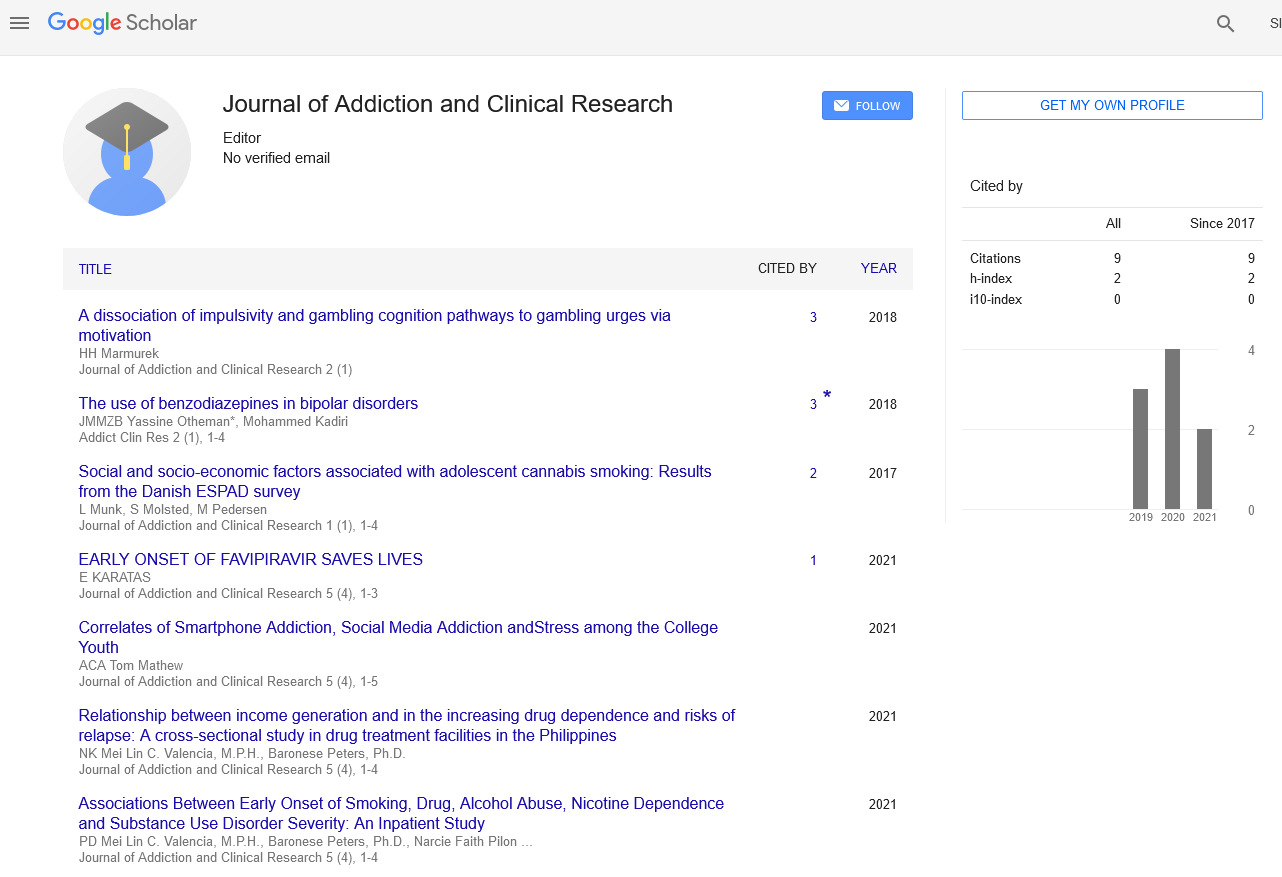Substance abuse- More than what meets the eyes
Received: 04-Oct-2017 Accepted Date: Oct 09, 2017; Published: 14-Oct-2017
Citation: Muralidharan S. Substance abuse- More than what meets the eyes. Addict Clin Res 2017;1(1):5.
This open-access article is distributed under the terms of the Creative Commons Attribution Non-Commercial License (CC BY-NC) (http://creativecommons.org/licenses/by-nc/4.0/), which permits reuse, distribution and reproduction of the article, provided that the original work is properly cited and the reuse is restricted to noncommercial purposes. For commercial reuse, contact reprints@pulsus.com
Editorial
Agrowing public menace in the 20th century is substance abuse. According the World Health Organization, 1 in 20 adults, are estimated to have used an illicit drug at least once, 1.7 beds per 100 000 population are available for the treatment of alcohol and drug use disorders and only 30% of the countries have effective medication to battle the same. At least 15.3 million persons have drug use disorders. Injecting drug use reported is reported in 148 countries, of which 120 report HIV infection among this population. The harmful use of alcohol kills around 3.3 million people worldwide and teenagers start drinking excessively at the tender age of 15 years. This calls for a global strategy to combat substance abuse. Multiple contributing factors, right from coping mechanism in case of stress to lifestyle, all have been spoken about in lengths but less of practical work is seen. Substance abuse has a far reaching impact that not only rips apart families but is also associated with increased crime rates. The number of lives lost has been simply condoled and a perspective beyond that is essential. There is a greater amount of stigma and marginalization associated with such individuals. Even though there is a wide spread recognition in the medical and nursing faculty related to substance abuse as a treatable condition, still there is scope for improvement. A major step towards this has been the recognition of addiction medicine as a clinical specialty by the American Medical Association. Though in western nations, we do have provisions for de addictions and training; the scenario may not be the same everywhere. The statistics are a vivid rhetoric of how punitive the aforesaid measures have been. It is surprising to know that, as per the CDC (Centre for disease Control), 2014 report, a two decade rapid rise in opioid overdose death has been simply prescription induced. We need to check the fact sheets, and also stop the misinformation which has further dwindled the situation to worst. Most of the policies are being addressed as punitive means and they focus only on to statistics. Though we have guidelines and measures set by international bodies, it is essential to see why this fails to reach such a large population at the grass root level. The concept of contributing to de addiction is frustrating and time consuming but is equally satisfying. A concrete integration of physicians and administrators in effective implementation of strategies and training is still required.





